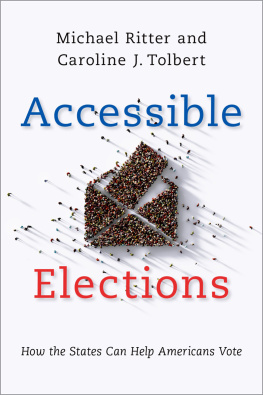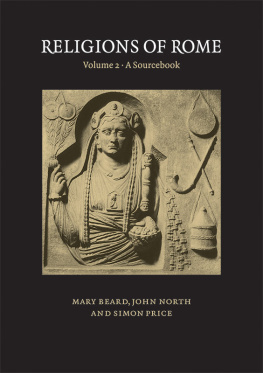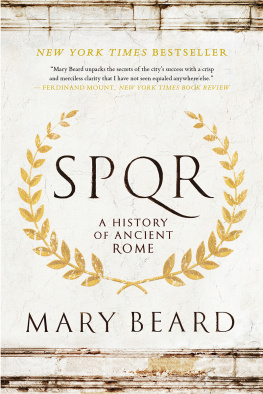PREFACE
The plan of this volume demands a few words of explanation. It was originally intended to be a collection of readings illustrating the varied phases of womens work in municipalities, but an examination of the available literature failed to reveal succinct, up-to-date summaries of the several important branches of that work. It was therefore necessary to search the records of hundreds of organizations and societies in order to obtain a just view of the extent and character of the labors of women for civic improvement of all kinds. Accordingly the volume as finally drafted combines both readings and original surveys.
The method followed has been dominated by a fourfold purpose: (1) to give something like an adequate notion of the extent and variety of womens interests and activities in cities and towns without attempting a statistical summary or evaluation; (2) to indicate, in their own words, the spirit in which women have approached some of their most important problems; (3) to show to women already at work and those just becoming interested in civic matters, the interrelation of each particular effort with larger social problems; and (4) to reflect the general tendencies of modern social work as they appear under the guidance of men and women alike.
The task has been difficult owing to the immense amount of material which months of research accumulated and the limitations of space which made necessary the compression of important narrative and descriptive accounts within a narrow compass. This difficulty has been further increased by the desire to escape the danger of overemphasizing womens activities in great cities and of omitting the no less important and significant work of women in smaller towns. Even at the risk of distorting the perspective by giving much space to minor cities and to local club activities, it has seemed worth while to make the book truly representative of American urban life as a whole. All city dwellers do not live in New York, Chicago and Philadelphia.
Limited as are the purposes of the book and serious as its shortcomings may be, it certainly contains the material and suggestions which warrant a new interpretation of that age-worn slogan, Cherchez la femme , so long the final suggestion to those who would do detective work into the causes of waywardness in men.
One who accepts the challenge of this slogan and attempts an investigation into the activities of modern women, as here imperfectly outlined, may come to the conclusion that, instead of being the source of all evil, woman comes quite as near to being the source of all good. This does not interfere with the belief that she might be the source of more good.
The female of the species may still be pictured as more deadly than the male but her attack, we find, is not upon man but upon the common enemies of man and woman. If this new evaluation of womans work in civilization seems to err on the side of woman, we shall be satisfied if it helps to bring about a re-evaluation which shall include women not in an incidental way but as people of flesh and blood and brainfeeling, seeing, judging and directing, equally with men, all the great social forces which mold character and determine general comfort, well-being and happiness.
Whichever evaluation is ultimately accepted, the following data are offered not for the purpose of imparting an inflated sense of womans importance. Indeed, in spite of what she has done, woman must still feel humble in the presence of the work outlined for the future and of the human problems that appeal to her for solution. Instead, therefore, of seeking to inspire an exaggerated ego by means of this story of womans achievements and visions, it is told in the hope that, by the assembling of hitherto disconnected threads and an attempt at the classification of civic efforts, more women may be induced to participate in the social movements that are changing the modes of living and working and playing, and that those who have watched their own threads too closely, may perhaps lift their eyes long enough to look at the whole social fabric which they are helping to weave.
Finally the story is told in the hope that more men may realize that women have contributions of value to make to public welfare in all its forms and phases, and come to regard the entrance of women into public life with confidence and cordiality, accepting in their coperation, if not in their leadership, a situation full of promise and good cheer.
M. R. B.
INTRODUCTION
With a truly remarkable grasp of a widely extended movement, Mrs. Beard has summarized and emphasized the work that the women of America have done in behalf of rescuing the city from the powers of evil and inefficiency, and placing it upon a higher standard of morality and effectiveness. The story she tells is a striking one and will serve to enhearten the increasing groups of women who are coming into the field of civic endeavor through the inspiration of organizations like those identified with the General Federation of Womens Clubs and the lengthening list of associations for specialized effort. Mrs. Beard has very appropriately stressed the part women have played in the modern civic movement, and yet she would be the last to maintain that women were alone responsible for it. As a matter of fact, one of the chief manifestations of the civic movement has been the proper stressing of the duties and obligations of a citizenship which knows no sex lines and enforces no sex obligations. We are all men and women, boys and girls, alike, members of the community, with common duties and obligations, and as such should bear our part and do our share. In the march forward, however, it seems necessary to organize the mass of citizens along various lines in order that the most productive results may be obtained.
Mrs. Beards book illustrates again, if that were necessary, the very large contribution which the private citizen has made to municipal and political development and progress in this country. As Mr. Deming pointed out in his address at Harvard when the National Municipal League met in Boston in 1902, the chief improvements in our political machinery have come as a result of the initiative of private citizens and of organizations of private citizens. Mrs. Beard, quoting Franklin MacVeagh, one of Chicagos most effective civic workers, says that it was the women of Chicago who started every one of the fifty-seven civic improvement centers in that city. Whether the impulse be feminine or masculine, but rarely have progressive measures been initiated by public officials. This is not intended as a criticism of public officials, because their duties as a rule are so exacting, and are every day becoming more so, that they have little time except for their discharge. The impulse for initiative must therefore come from without.
This book is sent forth with the hope that it will stimulate the women of America to still greater endeavors to make American cities better places in which to live. Women by natural instinct as well as by long training have become the housekeepers of the world, so it is only natural that they should in time become effective municipal housekeepers as well. This book demonstrates how successfully they may fulfill this rle. May the volume prove an inspiration and a guide to those whose interests it may have stimulated. Mrs. Beard has done her work well. May the response be a fitting one.









